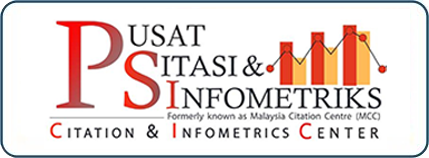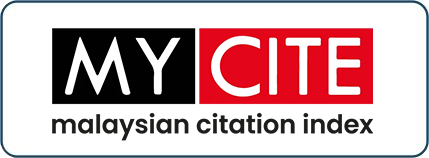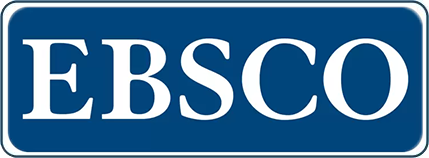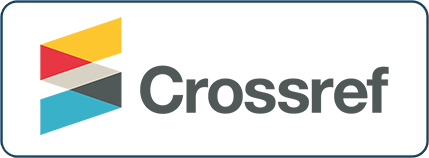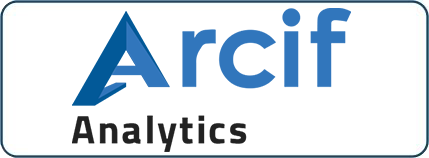Assessment Framework Of Zakat On Real Estate Property Developers In Malaysia
DOI:
https://doi.org/10.33102/jfatwa.vol30no3.724Keywords:
Property zakat, Formal developers, Small-scale developers, Zakat assessment framework, MalaysiaAbstract
This study aims to develop a more appropriate and equitable zakat assessment framework for real estate property developers in Malaysia by considering the differing operational realities between formally registered companies (Sdn. Bhd. or Berhad) and small-scale property developers operating individually. The property sector plays a significant role in Malaysia’s economic growth. However, existing zakat guidelines are predominantly based on manufacturing and production models, which emphasize inventory in the form of raw materials, work-in-progress, and finished goods. This approach does not reflect the nature of the property development business, where the core assets consist of land, completed houses, and buildings. This study adopts a qualitative methodology involving semi-structured interviews with nine informants comprising academics, industry experts, zakat officers, and both formal and informal property developers. Informants were selected through purposive sampling to ensure their expertise and experience in the subject of zakat for property businesses. Data were analyzed using thematic analysis to identify key similarities, differences, and emerging themes in the assessment of zakat on real estate ventures. Findings show a unanimous consensus among informants on the obligation of zakat on property development activities, as such ventures are categorized as ‘urud tijarah (trading assets). However, it was strongly emphasized that current zakat accounting frameworks fail to address the operational distinctions of property developers. For formal developers, zakat assessment should include current assets such as completed property inventories (buildings, houses, land lots), accounts receivable (net of doubtful debts), short-term investments, fixed deposits, and company cash holdings. Allowable current liabilities include payables, short-term borrowings, lease liabilities, outstanding taxes, and non-Shariah compliant income that must be excluded from zakat calculations. In contrast, small-scale developers are only liable for zakat upon the sale of the property and the realization of profit. Assessable assets include only the proceeds from property sales, while deductible liabilities include costs such as land development, labor, legal fees, licensing, and annual land taxes. This exception aligns with the Maliki school of thought, which considers such developers as tajir al-mutarabbis thereby granting them zakat relief by requiring payment only after the property is sold and zakat conditions are fulfilled.
Downloads
References
Abu ‘Ubayd, S. (1989). Kitab al-Amwal. Beirut: Dar al-Syuruq.
Abu Zayd, B. A. (2000). Fatawa Jami'ah fi Zakah al-Iqar. Riyadh: Dar al-Asimah li al-Nashr wa al-Tawzi'.
Al-‘Uthaimin, M. S. (2002). Al-Sharh al-Mumti’ ‘ala Zaad al-Mustaqni’. Saudi Arabia: Ibn al-Jawzi.
Al-Baihaqi, A. b. (2003). Sunan al-Baihaqi al-Kubra. Beirut: Dar al-Kutub al-‘Ilmiyyah.
Al-Bukhari, M. I. (2003). Sahih al-Bukhari. Beirut: Dar Ibn Kathir.
Al-Nawawi. (2003). Rawdah al-Talibin. Riyadh: Dar ‘Alam al-Kutub.
Al-Tabari, M. J. (1994). Jami' al-Bayan. Beirut: Muassasah al-Risalah.
Ariffin, K. M., & Omar, A. J. (2022). Prestasi Perniagaan Dalam Sektor Pemaju Semasa Pandemik Covid-19. Research in Management of Technology and Business, 3(1), 845-869.
Asli, N. F. M., & Safian, E. E. M. (2021). Faktor dan Corak Lambakan Harta Tanah Kediaman Tidak Terjual di Johor Bahru, Johor melalui Aplikasi Sistem Maklumat Geografi. Research in Management of Technology and Business, 2(1), 1397-1411.
Asni, F., Yusli, Y., & Zulkifli, M. I. (2025). Empowering asnaf entrepreneurs: a sustainable zakat framework through microcredit financing–qard hasan in Malaysia. Journal of Islamic Accounting and Business Research. https://doi.org/10.1108/JIABR-11-2024-0442.
Asni, F., Zulkifli, M. I., & Yusli, Y. (2024). Acceptance of Zakat institutions in Malaysia towards Micro Credit-Qard Hasan financing through Zakat fund (MCZF) for post-pandemic Asnaf entrepreneurs. Journal of Islamic Accounting and Business Research. https://doi.org/10.1108/JIABR-04-2024-0132.
Badran, B. A. A. (1968). Tarikh al-fiqh al-Islami wa nazariah al-milkiyyah wa al-‘uqud. Beirut: Dār al-Nahdah al-‘Arabiyah.
Bakari, S. (2017). The impact of domestic investment on economic growth: New evidence from Malaysia. Journal of Smart Economic Growth, 2(2), 105-121.
Bilal, M., Meera, A. K. M., & Abdul Razak, D. (2019). Issues and challenges in contemporary affordable public housing schemes in Malaysia: Developing an alternative model. International Journal of Housing Markets and Analysis, 12(6), 1004-1027. https://doi.org/10.1108/IJHMA-11-2018-0091.
Etikan, I., Musa, S. A., & Alkassim, R. S. (2016). Comparison of convenience sampling and purposive sampling. American journal of theoretical and applied statistics, 5(1), 1-4. https://doi.org/10.11648/j.ajtas.20160501.11
Fah Choy, C., Skitmore, M., Runeson, G., & Bridge, A. (2011). Property investment, construction and economic growth: the case of Malaysia. In Asian Conference on Real Estate (pp. 1-8).
Gray, K., & Gray, S. F. (2011). Land law. Oxford University Press, USA.
Ibn ‘Abd al-Barr, Y. A. (1993). Al-Istidhkar. Beirut: Dar al-Kutub al-‘Ilmiyyah.
Ibn Abi al-Qasim, M. Y. (1994). Al-Taj al-Iklil. Beirut: Dar al-Kutub al-‘Ilmiyyah.
Ibn Abi Syaibah, M. I. (2008). Al-Musannaf li Ibn Abi Syaibah. Saudi Arabia: al-Faruq al-Hadithah.
Ibn Kathir, I. U. (1999). Tafsir al-Quran al-‘Adzim. Riyadh: Dar Thabah.
Ibn Qudamah. (1405H). Al-Mughni. Beirut: Dar al-Fikr.
Ibn Rushd, H. (2004). Bidayah al-Mujtahid wa Nihayah al-Muqtasid. Cairo: Dar al-‘Aqidah
Jagun, Z. T., Nyakuma, B. B., Daud, D., & Samsudin, S. (2022). Property development during the COVID-19 pandemic: Challenges and outlook in Malaysia. Environmental Science and Pollution Research, 1-10.
JAWHAR. (2008). Manual Pengurusan Pengiraan Zakat. Kuala Lumpur: Jabatan Wakaf, Zakat dan Haji.
Junaidi, N. H. B., & Salleh, D. B. (2016). Masalah dalam kelulusan merancang pembangunan perumahan. Malaysian Journal of Social Sciences and Humanities, 1(2), 36–44. https://doi.org/10.47405/mjssh.v1i2.10.
Khan, S. J., Mohd Daud, S. N., Mat Yusoff, M. Y., Chyuan, W. W., & Che Johari, E. E. (2024). PROPERTY MARKET AND THE FINANCIAL SECTOR: EXPLORING MALAYSIA’S SCENARIO IN TIMES OF CRISIS. PLANNING MALAYSIA, 22(30). https://doi.org/10.21837/pm.v22i30.1449.
Lisa M. (2008). The Sage encyclopedia of qualitative research methods. Sage publications.
LZS. (2025). Zakat Perniagaan. See: https://www.zakatselangor.com.my/zakat-perniagaan/ (accessed on 11/6/2025)
Marzuki, J., & Manaf, Z. (2020). Characteristics and Role of the Malaysia Commercial Real Estate Market. Journal of Real Estate Literature, 28(1), 99-111. https://doi.org/10.1080/09277544.2020.1791577.
Maududy, C. F., & Gamal, A. (2019, November). Literature review: technologies and property development. In IOP Conference Series: Earth and Environmental Science (Vol. 396, No. 1, p. 012020). IOP Publishing. DOI 10.1088/1755-1315/396/1/012020
Muslim, H. (2006). Sahih Muslim. Beirut: Dar Ihya' al-Turath al-'Arabi.
Muzari, T., Shava, G. N., & Shonhiwa, S. (2022). Qualitative research paradigm, a key research design for educational researchers, processes and procedures: A theoretical overview. Indiana Journal of Humanities and Social Sciences, 3(1), 14-20.
Nowell, L. S., Norris, J. M., White, D. E., & Moules, N. J. (2017). Thematic analysis: Striving to meet the trustworthiness criteria. International journal of qualitative methods, 16(1). https://doi.org/10.1177/1609406917733847
Othman, I., Ghafar, N. H. A., & Choon, S. W. (2021). The effectiveness implementation of project risk management plan in property development in malaysia. In ICCOEE2020: Proceedings of the 6th International Conference on Civil, Offshore and Environmental Engineering (ICCOEE2020) (pp. 663-668). Springer Singapore.
PPZ. (2025). Zakat Perniagaan. See: https://www.zakat.com.my/info-zakat/jenis-jenis-zakat/zakat-perniagaan/ (accessed on 11/6/2025)
Ramy, A., Floody, J., Ragab, M. A., & Arisha, A. (2018). A scientometric analysis of Knowledge Management Research and Practice literature: 2003–2015. Knowledge Management Research & Practice, Vol. 16 No. 1, pp. 66-77.
Takona, J. P. (2024). Research design: qualitative, quantitative, and mixed methods approaches. Quality & Quantity, 58(1), 1011-1013.
Wallwey, C., & Kajfez, R. L. (2023). Quantitative research artifacts as qualitative data collection techniques in a mixed methods research study. Methods in Psychology, 8, 100115. https://doi.org/10.1016/j.metip.2023.100115.
Zakat MAINPP. (2025). Zakat Perniagaan. See: https://www.zakatpenang.com/zakat-perniagaan/ (accessed on 11/6/2025)
Downloads
Published
Issue
Section
License
Copyright (c) 2025 Muhammad Fathullah Al-Haq Muhamad Asni, Ahmad Yusairi Yusli, Abdul Aziz Mohammed Abd Allah Al-Shibany

This work is licensed under a Creative Commons Attribution 4.0 International License.
The copyright of this article will be vested to author(s) and granted the journal right of first publication with the work simultaneously licensed under the Creative Commons Attribution 4.0 International (CC BY 4.0) license, unless otherwise stated.





